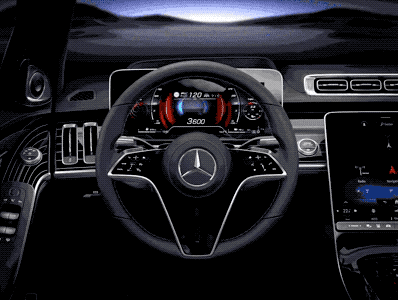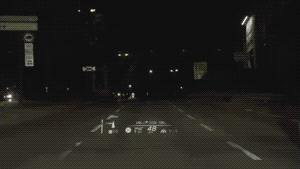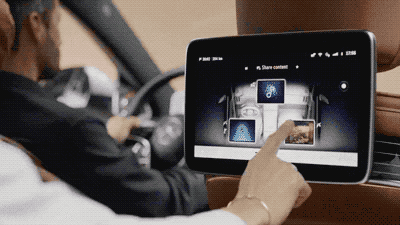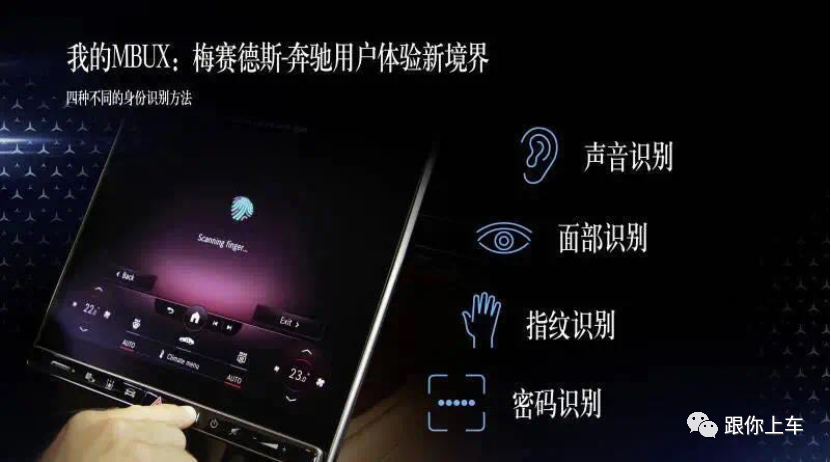On September 2nd, the new generation Mercedes-Benz S-Class was globally launched as scheduled.
Compared to the previous generation model, the new S-Class has undergone self-innovation with the active abandonment of the leading-edge dual screens design, and adopts a 12.8-inch OLED waterfall-style central control screen and 12.3-inch full LCD instrument panel for interior design language, becoming the biggest topic of the day on forums.
People couldn’t help but wonder if the new S-Class’s interior design could surpass the classic dual screens design? Or in other words, could Mercedes-Benz redefine flagship luxury once again?
In my opinion, the essential vertical screen design of the S-Class, which is a natural waterfall style central control screen, doesn’t have the amazing feeling of the initial dual screens design. However, it is definitely biased just to dismiss the new S-Class design from its screen shape.
Just like Tesla, which revolutionized Model 3 with a central screen design, we can consider the interior design as a different path to the same destination. Rather than dwelling on this and being depressed, let’s focus on how the new S-Class has redefined flagship luxury this time.
1: Technology and luxury
Without discussing the user experience of the new S-Class, the technology configuration alone shows a full commitment.
In recent years, perhaps because new carmakers are more focused on the intelligent technology field, or because traditional carmakers are too rigid in their consideration of safety factors, more and more futuristic functions have been leading the way in pure electric models. This is a big departure from the product development rhythm where features came from the top.
The first step for the new S-Class in redefining flagship luxury is to regain the high ground and collect all these functions.
a: Naked-eye 3D instrument screen
The immersive experience that allows users to achieve without wearing 3D glasses is achieved by using a camera integrated into the screen to capture the position and distance between the user’s eyes when watching the screen, and analyzing different perspective effects at different positions. It is achieved through system algorithms combined with a special screen pixel structure and complex screen matrix, as shown in the actual viewing effect below:

It is not difficult to see that the so-called naked-eye 3D instrument screen of the new S-Class is not entirely capable of presenting 3D effects on the entire 12.3-inch screen. The really displayable area is similar to the holographic digital instrument panel on the Peugeot 208. The commendable aspect is that the former is achieved through a camera and algorithm, while the latter is achieved through imaging using mirrors.
Based on the principle of stating things objectively, we can say that the new S-Class’s instrument screen does indeed feel more futuristic.# b: AR Reality Navigation
This seemingly unattainable but increasingly common technological feature is highlighted in the new S-Class. It is reported that the new S-Class’s head-up display system with augmented reality capabilities can display an area equivalent to a 77-inch high-definition screen, making it the largest in the industry. In practical use, it can provide dynamic road guidance based on real-time road conditions by projecting animated arrows in virtual form onto the actual environment 10 meters in front of the user’s windshield.

In the future, the AR reality navigation function of the new S-Class will also be closely integrated with auxiliary driving functions to guide users in overtaking, cruising, and lane merging. Coupled with the Digital Light technology, these two high-tech features will undoubtedly provide the safest protection for both passengers in the car and pedestrians outside.
c: Multi-Screen Linkage
The new S-Class has a trending feature for the back-seat passengers, which is the touch screen LCD display. Users not only can share songs and navigation routes with other passengers, but also independently control most of the functions in the cabin, such as ambient lighting, air conditioning, and other controls.

This is the difference between the new S-Class and other car models with multi-screen linkage functionality. For the dignified users of the new S-Class, their desire for control is generally stronger.
Overall, although these futuristic features have been prevalent in the market for some time, it is truly rare to have these features all integrated into one car model.
Therefore, the new S-Class’s reinvention of the concept of flagship luxury is already very clear. Firstly, it raised the banner of “technology is luxury”, offering users a convenient technological experience. Secondly, it paid attention to details.
2: Technology and Comfort
Love so deep, cotton; Detail so extreme, black. The details of the new S-Class are mainly manifested in three “black technologies”:
Firstly, personalized account settings.
When users sit in the driver’s seat for the first time and enter their height and weight into the system, the steering wheel and seat will automatically adjust to the best driving position. Secondly, the new S-Class’s integrated account system also introduces biometric recognition technology, allowing users to conveniently enter their account using fingerprint, facial and voice recognition, and quickly manage various settings.

Secondly, gesture control and activity detection.Through the camera and algorithm analysis, the MBUX Interior Assist can learn from the user’s eye movement, hand gestures, and body language, and link corresponding interior controls after understanding the user’s intentions. For example, when the user’s gaze shifts to the rear during reverse, the system will automatically open the blinds.

Thirdly, the active ambient lighting system.
The highlight of the new S-Class ambient lighting system is the integration with the driving assistance system, incorporating the visual effect of ambient lighting into interaction with the user to enhance the visual warning function. For example, when the system detects an oncoming vehicle, the lighting strip on one side of the door panel will flash, giving the user a reminder to prepare to get off. Compared with the flashing warning on the dashboard and rearview mirror, this is obviously more intuitive.

Of course, the protection provided by the new S-Class for users is more than just that. The L3 level driving assistance system, the world’s first forward-facing airbag for rear passengers, the intelligent magic body control system that can raise the body up to 80 millimeters in 0.1 seconds, and the rear-wheel active steering system that allows the body to turn with a diameter less than 11 meters are all constantly protecting the passengers in the car.

Personally, for Mercedes-Benz, it’s not difficult to equip various technological configurations on the car. The real challenge is how to maintain the original luxury of the S-Class, and how to give users a new personalized experience with warmth through the new technological configurations. It must be said that Mercedes-Benz has always been very precise in this aspect of details.
Conclusion:
Whether it’s the arithmetic algorithm behind the MBUX system or the visible hidden door handle design, the new S-Class exudes a more technological atmosphere from head to toe, which has never been seen in any generation of S-Class. Needless to say, in the future models of Mercedes-Benz, the proportion of technology elements will increase, and the waterfall-style central control screen design will also become the mainstream design of C-Class and E-Class in the future.
 In 2012, the vertical touch screen design of Tesla Model S gave traditional car enterprises a profound lesson. In 2013, the dual screen design of the 10th generation of Mercedes-Benz S-Class also sparked a new design trend. However, who would have thought that several years later, they would embrace their respective design concepts one after another, with Model 3 adopting a horizontal screen design, and the new S-Class turning to a large vertical screen design.
In 2012, the vertical touch screen design of Tesla Model S gave traditional car enterprises a profound lesson. In 2013, the dual screen design of the 10th generation of Mercedes-Benz S-Class also sparked a new design trend. However, who would have thought that several years later, they would embrace their respective design concepts one after another, with Model 3 adopting a horizontal screen design, and the new S-Class turning to a large vertical screen design.
From the perspective of performance, the new S-Class hopes to redefine flagship luxury. In their opinion, a waterfall-style central control screen can better interpret this point than a dual screen design. However, from a deeper level, the key to redefining flagship luxury for the new S-Class lies in the inclination towards a sense of technology, which is precisely the gene that has been flowing in the blood of Tesla since its inception. Perhaps, truly nothing remains constant.
This article is a translation by ChatGPT of a Chinese report from 42HOW. If you have any questions about it, please email bd@42how.com.
